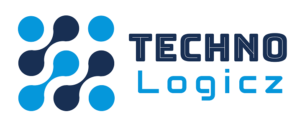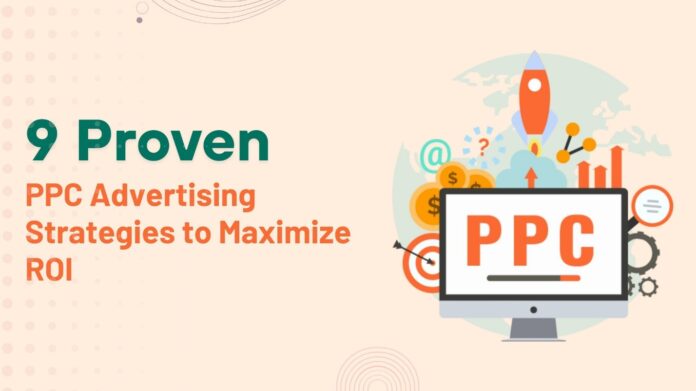Pay-per-click (PPC) advertising offers businesses a dynamic technique to drive traffic, acquire leads, and amplify revenue. However, with costs per click steadily rising, achieving a strong return on investment requires a disciplined, strategic approach. Effective PPC advertising services can turn your campaigns into a reliable source of profit.
Below, explore nine actionable paid ads strategies to grow your PPC performance.
1. Perform in-depth Keyword Research
Selecting the right keywords ascertains that your ads make their way to the intended audience.
Prioritize high-intent, long-tail keywords—such as “affordable project management software”—over broad phrases like “software,” which often attract irrelevant clicks.
- Pay attention to phrases signaling purchase intent.
- Adopt tools to identify low-competition opportunities.
- Avoid generic keywords that inflate costs without conversions.
- Examine the keyword tactics used by rivals to identify any lost opportunities.
2. Develop Convincing Ad Copy
Draw attention to what sets you apart: a discount, an exceptional offer, or a bold promise. Use action-oriented language like “Get Started,” “Claim Your Deal,” or “Shop Now” to spark urgency.
| Ad Component | Recommended Approach | Common Pitfall |
| Headline | Highlight major strengths | Overloading with keywords |
| Description | Address customer needs | Using vague statements |
| CTA | Inspire immediate action | Depending on generic prompts |
3. Landing Page Optimization for Conversions
A well-designed landing page is critical to converting clicks into customers. Ensure the uniformity between your ad’s message and the content on your linked landing page, supporting uninterrupted user interactivity.
- Include a clear, benefit-driven headline.
- Feature a single and influential CTA.
- Make sure that your ad is compatible for mobile.
- To draw attention to the call to action, keep the layout simple and uncluttered.
4. Refine Audience Targeting
Advanced targeting and segmenting identify high-value customers, boosting visitor involvement and conversions. Concentrate on demographics (gender, location, age, income), interests, and behaviors to reach the right people.
- Target specific groups by age, income or gender for precision.
- Align ads with users’ hobbies and browsing habits for relevance.
- Utilize remarketing to re-engage past visitors and influence them to take action.
- Refine strategies constantly to maintain a competitive edge.
5. Implement Smart Bid Management
Effective bid strategies balance cost control with performance goals. Choose between manual bidding for granular oversight or automated options like Target CPA to simplify your efforts.
| Strategy | Ideal Scenario | Consideration |
| Manual CPC | Precise budget management | Necessitates ongoing attention |
| Target CPA | Stable acquisition costs | Confides on historical data |
| Target ROAS | Revenue-focused outcomes | May adjust spend dynamically |
6. Monitor Performance Metrics
Measure and track KPIs (key performance indicators) periodically like click-through-rate (CTR), cost per conversion (CPC), and entire ROI.
- Review weekly for emerging patterns.
- Adjust underperforming elements promptly.
- Prioritize conversions over raw click volume.
- For a clear assessment of achievement, establish benchmark objectives for every statistic.
Advice: Consider talking to conversion optimization consultants for expert advice.
7. Utilize Ad Extensions
Brands can use ad extensions to improve visibility of the ads and provide additional clarification, raising the probability of clicks. Businesses can include callouts or structured snippets to enrich their ads.
- Add sitelinks for direct navigation to key pages.
- Use callouts to highlight perks like “24/7 Support.”
- Test extensions to determine the most persuasive combinations.
- Use structured snippets to highlight features, services, or product categories.
8. Analyze Competitor Tactics
Staying competitive demands insight into rival’s PPC strategies. Make use of advanced tools to evaluate competitors’ keyword choices and ad messaging.
- Determine gaps in their approach to exploit.
- Differentiate with superior offers or design.
- Continuously monitor to accommodate market fluctuations.
- Determine which high-performing keywords rivals are aiming for and look for ways to increase your bid.
9. Leverage A/B Testing
Conduct A/B tests on ad visuals, landing pages, and bidding tactics to uncover what drives the best possible outcomes.
- Experiment with one variable at a time for clarity.
- Scale successful tactics across campaigns.
- Allocate a small budget for experimentation.
- Compare results to determine winners.
Power Up with Google Ads and Meta Ads
For standout results, leverage the strengths of leading platforms. For instance, Google Ads shines at capturing search-driven intent, while Meta Ads targets users on the basis of their pain points, preferred activities and behaviors.
Notably, Meta Ads and Google Ads are the paid ad channels with the highest reported ROI, making them imperative for driving exceptional campaign performance.
Conclusion: A Strategic Path to Profitability
In a nutshell, PPC advertising strategies demands diligence and adaptability. Organizations can implement these nine strategies—ranging from keyword selection to continuous testing— which provides an efficient framework for turning clicks into revenue.
Refining and adapting ads to changing consumer behaviours and market dynamics is essential to success. Businesses make sure they stay competitive in a constantly changing digital world by continuously improving their landing pages, ad copy, and bidding methods.
Still have doubts? Get in touch with our experts today to optimize your PPC plan for maximum returns.
 Author Bio – Khushpreet Kaur is a writer with a strong background in working for a digital marketing company, where she specializes in crafting content that drives business growth. With a passion for exploring new places and reading books she brings fresh perspectives to her writing. Her curiosity fuels her creativity, making every project an exciting journey.
Author Bio – Khushpreet Kaur is a writer with a strong background in working for a digital marketing company, where she specializes in crafting content that drives business growth. With a passion for exploring new places and reading books she brings fresh perspectives to her writing. Her curiosity fuels her creativity, making every project an exciting journey.

